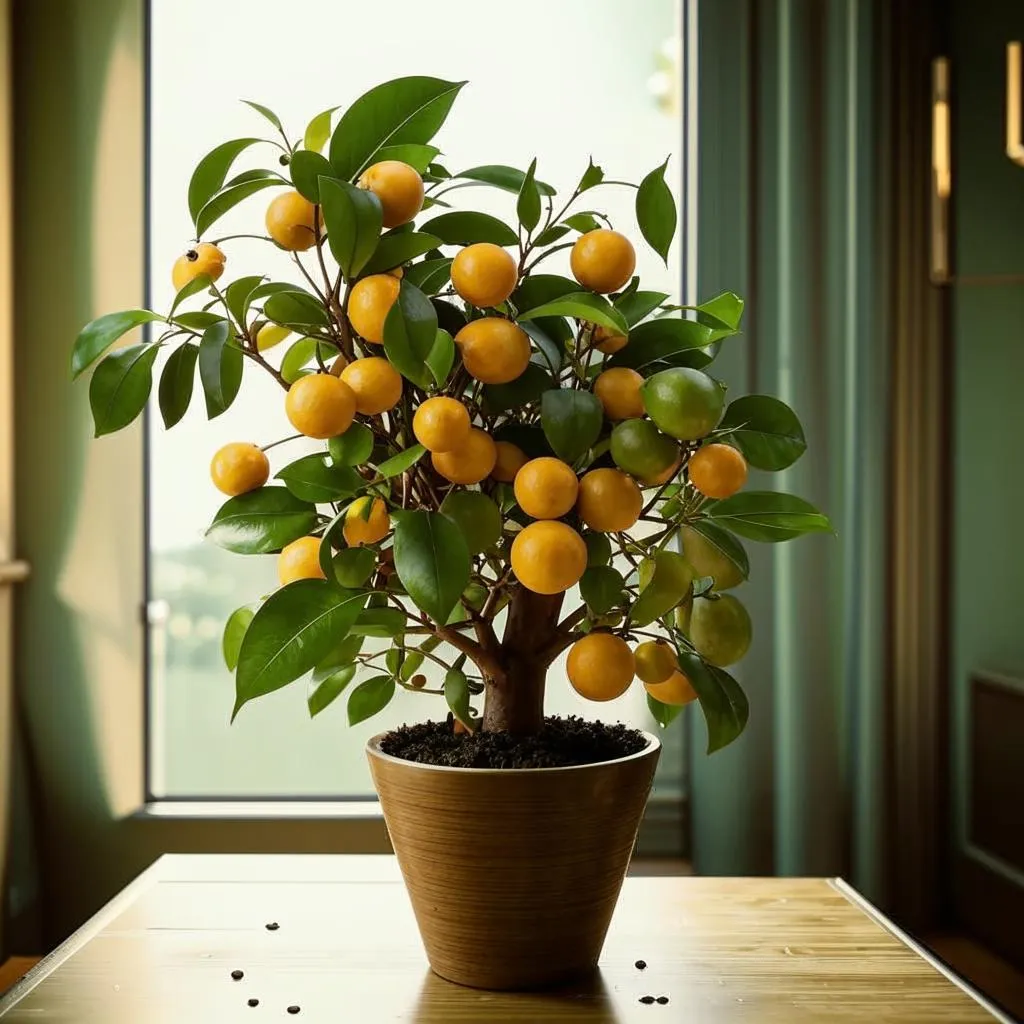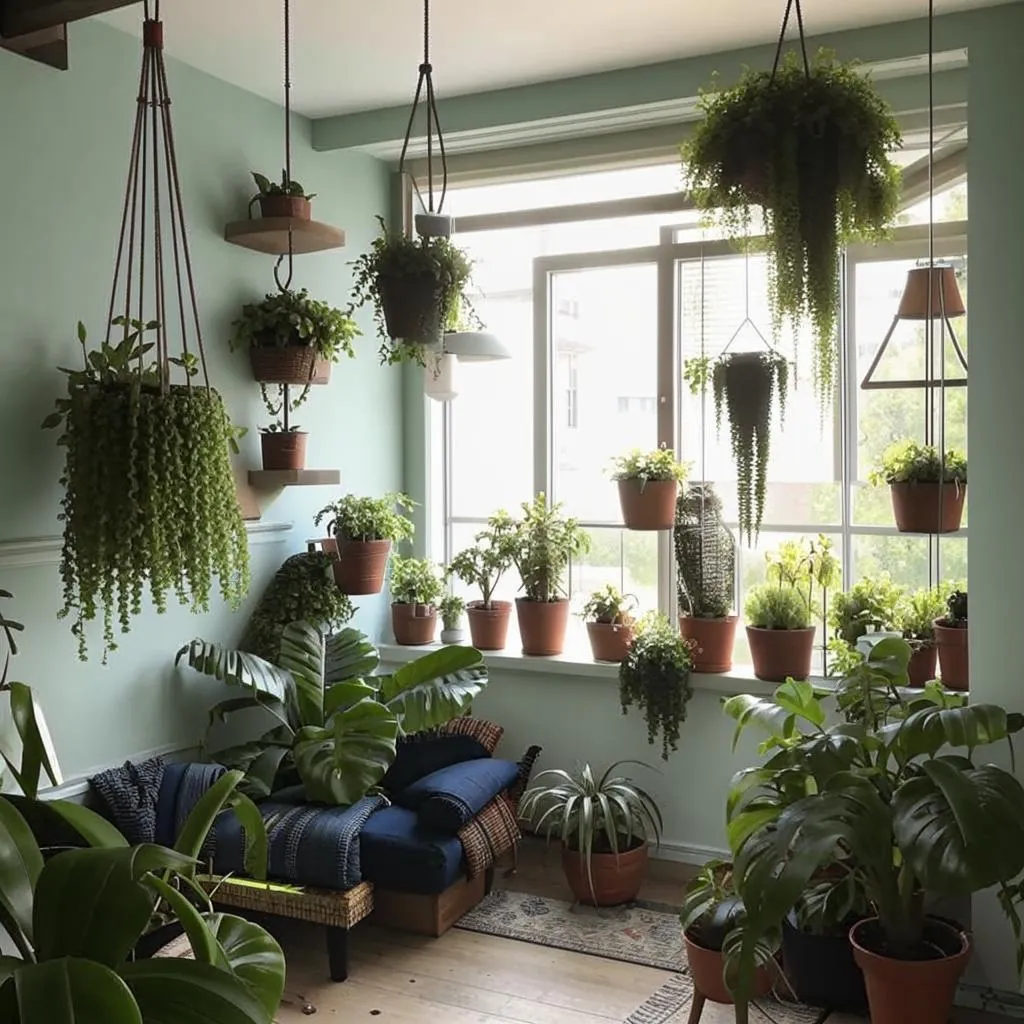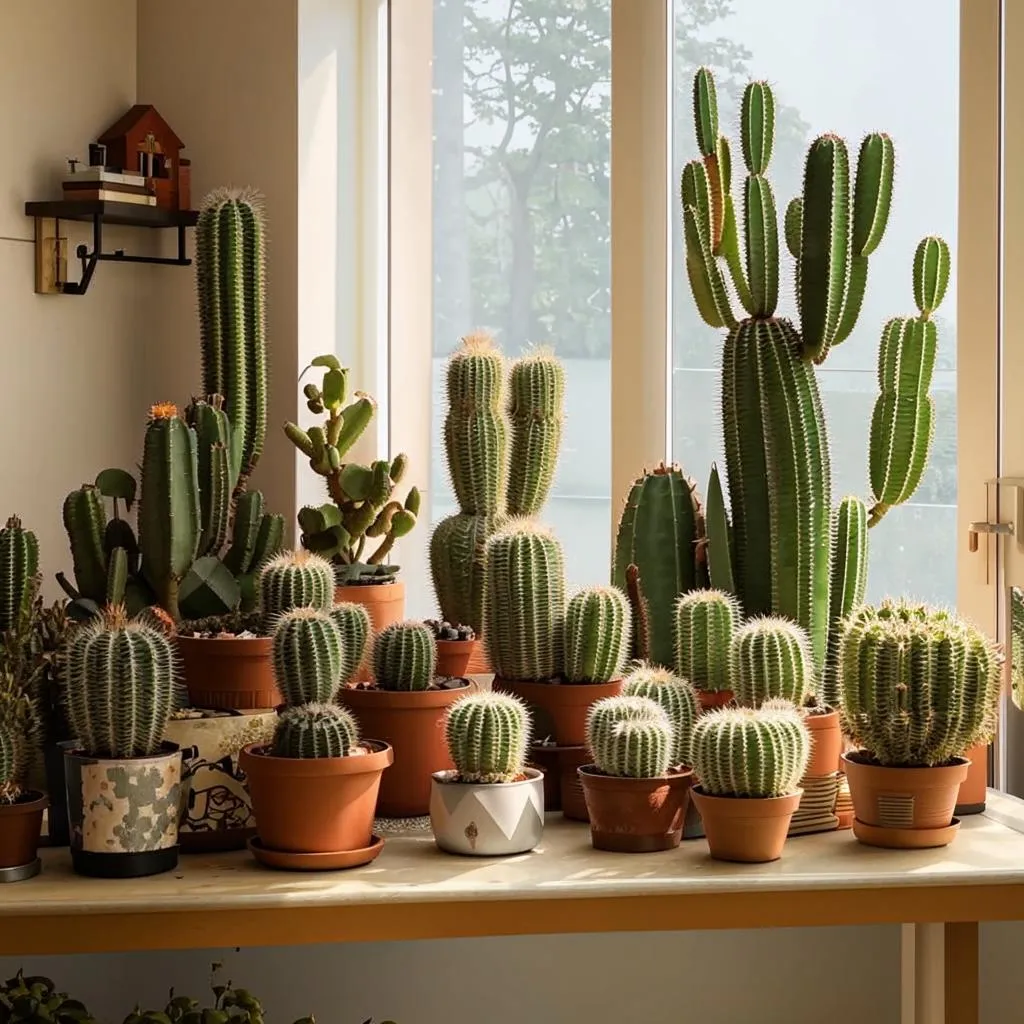Useful articles on plant care
Caring for Indoor Citrus Plants

Indoor citrus plants such as lemons, oranges, and mandarins not only enhance the
interior with their exotic appearance but also delight owners with fragrant fruits. To ensure these plants
grow healthy and bear fruit, it is important to provide them with proper care. Let's explore the key
aspects of caring for indoor citrus plants.
Lighting
Citrus plants love bright light, so it's best to place them on windowsills facing
south. During winter when natural light is insufficient, consider using grow lights for additional
illumination. Lack of light can lead to yellowing and dropping leaves.
Temperature
The optimal temperature for growing citrus ranges from about 18° to 25°C. Avoid sudden
temperature changes and drafts, especially in winter. In summer, you can move your plant outdoors onto a
balcony or into the garden, but remember that abrupt environmental shifts may stress the plant.
Watering
Water your citrus regularly but moderately. The soil should be moist but not
waterlogged. Excessive moisture can cause root rot. Use room-temperature water, preferably after standing
overnight. It's also advisable to mist the leaves occasionally to maintain air humidity.
Fertilization
To support active growth and fruiting, regular fertilizing is essential. Opt for
specialized citrus fertilizers containing nitrogen, phosphorus, and potassium. Feed your plant every two
weeks during spring and summer, reducing frequency to once a month in autumn and winter.
Repotting
Repot your citrus plant every two to three years in spring. Choose a pot slightly
larger than the previous one. Use loose, nutrient-rich soil consisting of loam, sand, and compost. After
repotting, water generously and keep the plant in partial shade for several days.
Pruning
Regular pruning helps shape the plant's crown and encourages fruiting. Remove weak or
damaged branches, along with shoots growing inward. Conduct pruning early in spring before the start of
active growth.
Hanging Houseplants: Decorating Your Space and Improving Air
Quality

Hanging houseplants have become increasingly popular among indoor gardening
enthusiasts. Not only do they add uniqueness to your decor, but they also bring a touch of nature right
into your home. These plants come in various shapes, sizes, and colors, allowing you to find the perfect
fit for any room.
Popular Types of Hanging Plants
- Spider Plant (Chlorophytum comosum)
- Pothos (Epipremnum aureum)
- String of Pearls (Senecio rowleyanus)
- English Ivy (Hedera helix)
- Boston Fern (Nephrolepis exaltata)
Care Tips for Hanging Plants
- LightingMost hanging
plants thrive in medium to bright indirect light. Avoid placing them in direct sunlight, which can
scorch the leaves. Position them near a window, but not too close to avoid overheating.
- WateringConsistent
watering is crucial for maintaining the health of your plants. Keep the soil evenly moist, but not
soggy. Overwatering can lead to root rot, while underwatering causes wilting and leaf drop.
- FertilizingHanging plants
benefit from regular feeding, particularly during their active growing season (spring and summer). Use
a balanced liquid fertilizer diluted according to package instructions.
- PruningPeriodically
trimming your plants helps control their size and shape. Remove dead or damaged leaves and stems to
encourage new growth and maintain a tidy appearance.
- Pest ManagementCheck your
plants regularly for signs of pests like spider mites or mealybugs. If you spot any issues, treat the
plant promptly with appropriate pesticides or natural remedies like neem oil.
Decorative Uses
Hanging plants are perfect for spaces with high ceilings or limited floor area. They
can be displayed on walls, shelves, cabinets, or special stands. Combining multiple types creates a
visually appealing green corner and adds character to your living space.
Conclusion
Hanging houseplants offer a fantastic way to bring greenery indoors without taking up
valuable floor space. With proper care and attention, they’ll not only beautify your environment but also
help purify the air you breathe.
Caring for Indoor Cacti: Tips for Beginners

Indoor cacti are popular decorative plants that attract attention due to their unusual
shapes and ease of maintenance. Despite their apparent simplicity, there are certain rules to follow to
keep your cacti healthy and visually pleasing.
Lighting
Cacti require plenty of light, so the ideal location for them would be sunny
windowsills. However, be mindful that direct sunlight can damage the delicate tissues of the plant,
especially during the hottest hours of the day. Therefore, try to shade your cacti during the peak sun
hours.
Soil
Specialized soil is needed for growing cacti, consisting of a mix of peat, sand, and a
small amount of clay. Such a mixture ensures good water permeability and prevents waterlogging. Don’t
forget about drainage holes at the bottom of the pot to allow excess water to drain freely.
Watering
One of the critical aspects of caring for cacti is proper watering. Cacti should be
watered infrequently but abundantly. During the spring and summer months, watering is typically done about
once a week, whereas in winter, once a month is sufficient. Make sure that the water doesn’t stagnate in
the pot, as this could lead to root rot.
Fertilization
During the active growth period (from spring to fall), cacti can be fed with special
fertilizers designed for succulents. These fertilizers contain minimal amounts of nitrogen, preventing
excessive green mass growth and promoting flowering.
Repotting
Cacti should be repotted every two to three years, choosing a pot slightly larger in
diameter each time. Young plants need annual repotting. Be careful when handling the roots during
transplanting to avoid damaging them.
Diseases and Pests
Common enemies of cacti include fungal diseases and pests such as spider mites and
mealybugs. To prevent diseases, monitor the cleanliness of the substrate and remove affected parts of the
plant promptly. If pests appear, use specialized insecticides.
Winter Rest
During winter, most cacti enter a dormant state. At this time, they should be moved to
a cool room with temperatures around 10-15°C and reduce watering to a minimum. This treatment will prepare
the plant for the next growing season.
leave a request for the entire catalog


